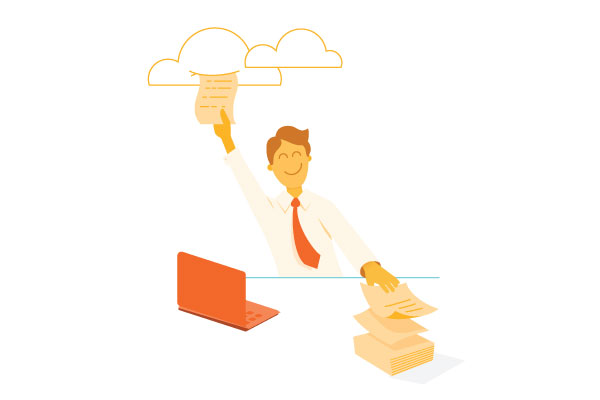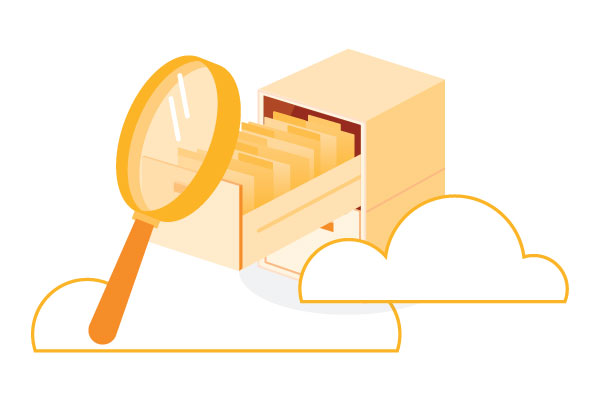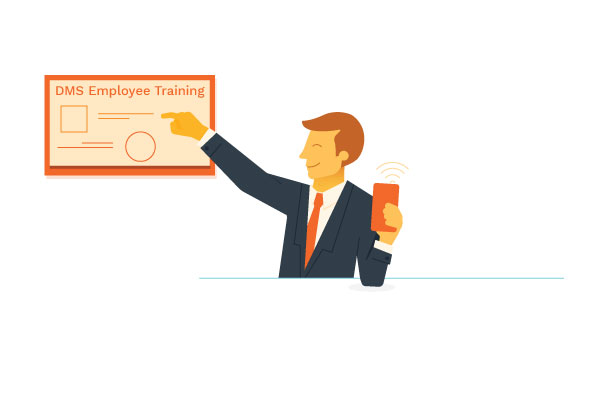Document Management Systems (DMS) that operate in the cloud can do wonders for streamlining workflows and helping your team do more in less time. With tools to help you comfortably and securely store, track, and edit any of your company’s documents-- while promoting sustainability and remaining paperless, DMS offers solutions for offices looking to bring simplicity and uniformity to their document management.
With so much offered from one source, it can start to become overwhelming to try to utilize every facet of the software system. Here are six best practices for getting the most out of your cloud document management system:
1. Streamline your Remote Workforce
Cloud document management systems optimize workflows by providing organizational tools for users that need to manage, store or edit documents that can be accessed from anywhere in the world. They make it possible for remote workforces to access a central hub that safely stores all of their documents, with customizable platforms that bring uniformity and structure to virtual workspaces.
Within one cloud document management system, your team leads can:
- Use organized calendars to plan and assign tasks for individuals and groups
- Safely store documents and information that remote workers need in a central, organized location
- Provide tools for editing and collaborating on documents (*detailed description in following section)
- Ability to integrate communication resources like email, group messaging, or video chat
The wide array of customizable features that can be implemented within your DMS will do wonders to simplify operations and allow for more streamlined workflows.
2. Implement Collaborative Tools
In a typical instance, collaborative projects come together in stages. Without clear communication and a “paper-trail” to follow, it can be difficult to keep track of multiple edits and drafts within a single document-- let alone the many it could take to complete a task.

Here are some of the tools available in most DMS to aid collaboration:
- Commenting directly on documents, this allows you to clearly highlight and make suggestions on text or graphics while editing
- Integrating email and chat features make it easy to discuss and plan for group projects
- Using auto-save and History features to look back at previous drafts and keep track of changes
- Creating multiple versions of individual documents and easily organize with metadata
Customize your platform to include what tools are going to work best for your team, the choice is yours!
3. Utilize Metadata
One of the biggest advantages of using a cloud based DMS is the ability to enable metadata and keyword searches and quickly find any file you’re looking for. The software does this by scanning the contents of the entire document and finding relative keywords based on your search terms. This is going to make your life a lot simpler, and take the guess-work out of document storage.
Organizing and filing paper documents can quickly become a time consuming task, and often leads to clerical errors and misfiling. When using a cloud based document management system that process is avoided, but you and your team still need to agree on a coherent naming system so everyone can find the documents they need with ease.

Metadata will make locating documents simpler, but if you have 15 different documents on the same subject, it can still end up looking a bit cluttered. Naming documents in a systematic way, and then categorizing them into folders (that can then be searched further) will save your team a lot of time and lead to increased productivity.
4. Audits and Retention Policy
How long do you keep stored files? Is it a year or more? Depending on what industry you work in there are typically regulations in place to ensure any sensitive information is stored, and then disposed of, properly. This could include employee records or your client’s personal information, anything that could prove harmful in the event of a data breach. For the legal industry the rule is to destroy documents after five years, but for a small business you need to have records dating back as far as seven years for tax purposes.
After you know what is expected in your field, you can use the software to:
- Search for documents based on when they were created or last edited
- Either delete or dispose of outdated documents according to what is mandated in your industry
For some industry specific document management systems there are automatic audits you can set up that have the software to do the heavy-lifting for you. They work by setting a limit on how long a document can be stored before it needs to be either reviewed or removed. If this is included in your system I highly recommend setting it up, but regularly searching the system manually works just as well-- although with more effort.
5. Regular Employee Training
As with any system, cloud-based document management software only works as well as it’s users do. Your workforce may not be familiar with the DMS you choose, especially if it is their first time using electronic document management systems.

It is important to meet your team where they are, and provide training that is suitable for their level of technical knowledge. Maybe try sending out a survey or speak with team members individually to gauge how comfortable they are with the software systems you expect them to be using.
Be sure to offer subsequent training sessions as well. All software systems are notorious for frequently updating and your team members may require further instruction to be successful. Once everyone is working at the same pace, it will make streamlining workflows simpler and lead to a more confident workforce and higher morale.
6. Control User Access
In any office setting, security is everyone’s responsibility. Newer document management systems offer security features that allow you to grant or deny access to anyone based on geolocation or other risk-based criteria.
But if you aren’t able to restrict user access based on network connection or geolocation, it has become standard practice at most companies to require multi-factor authentication while logging-in to systems that contain sensitive information.
This can be enabled within your DMS software and requires employees to simply use their phone number or email address to sign-in along with a secure password. Requiring or suggesting this feature be enabled by your team will drastically improve your company’s cyber security.
Cloud document management systems also keep detailed records of when and by who information is being accessed, aiding you in the constant effort to remain compliant with industry regulations. Most systems offer notification alerts as well, so you know immediately if there is ever any questionable activity on your accounts.
The best document management system is going to be the one that works for you, not the other way around. Don’t be afraid to try something new with your team, and let the simplicity of a DMS lead you to more creative solutions and increased success.
Categories: Cloud, Managed Services











